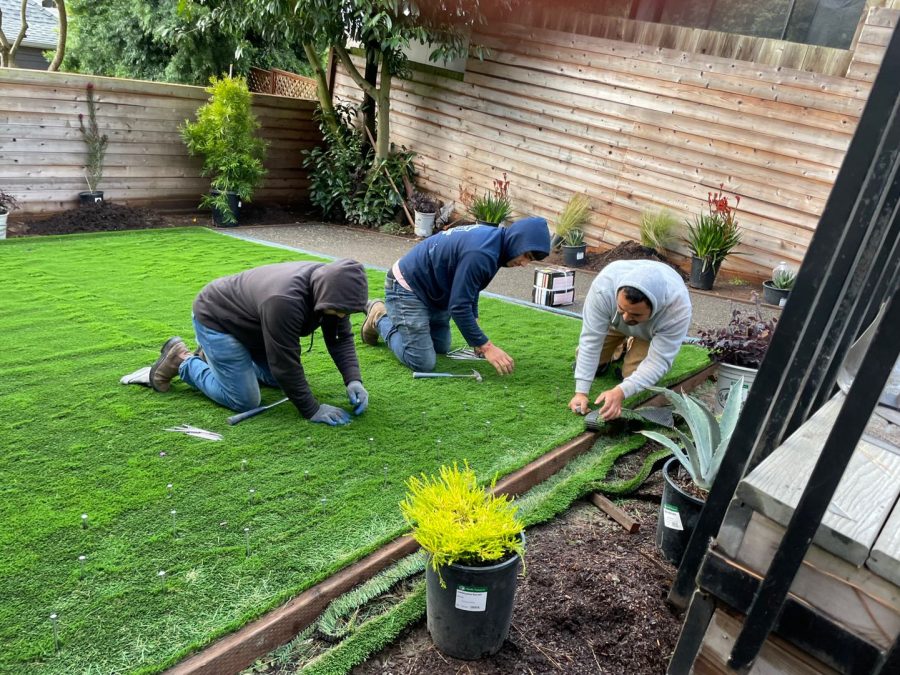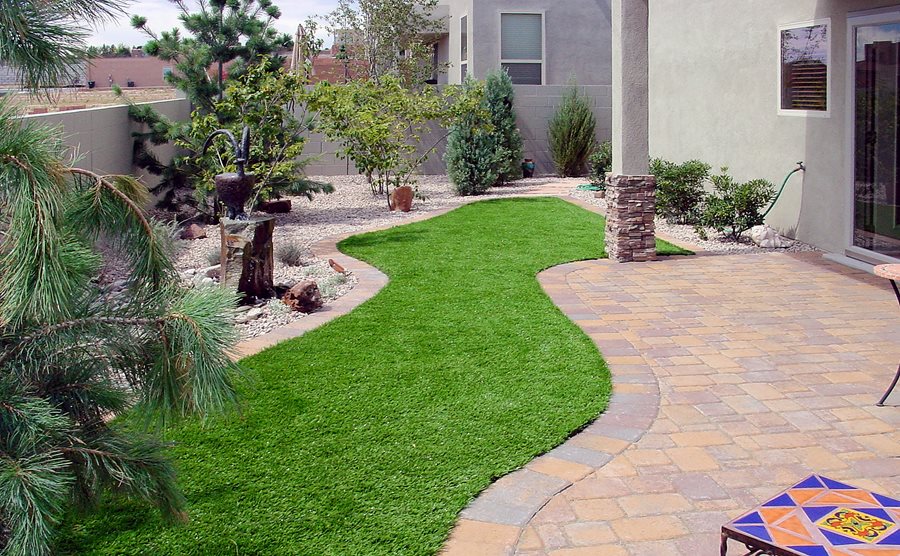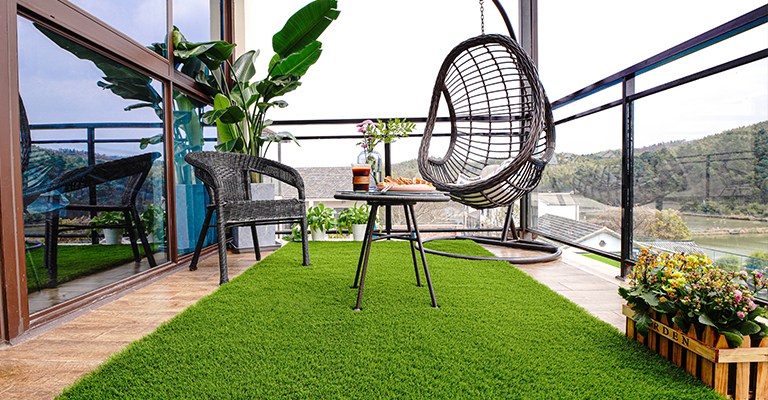Explore the Environmental Advantages of Opting for Artificial Lawn Solutions
The adoption of fabricated lawn solutions offers an engaging chance to attend to pushing environmental obstacles. By significantly decreasing water usage and reducing the application of dangerous chemicals, these options not just advertise lasting landscaping yet likewise protect regional communities. Moreover, the reduced carbon impact associated with lowered maintenance activities adds to an extra sustainable method to land administration. The implications of these advantages prolong past mere preservation efforts, elevating concerns regarding their long-lasting impact on habitat preservation and overall eco-friendly equilibrium. Checking out these measurements discloses a complicated interplay worth thinking about.
Water Conservation Advantages
One of the most substantial advantages of fabricated lawn is its capability to conserve water. In comparison, man-made turf does not require watering, substantially minimizing the total demand for water sources.
By eliminating the requirement for routine watering, fabricated lawn adds to lasting landscape practices and aids alleviate the ecological effect of extreme water intake. The preservation of water extends to the decrease of drainage, which can lead to dirt disintegration and waterway pollution.
Additionally, the installment of fabricated grass allows municipalities and property owners to designate water resources more successfully, focusing on important usages such as alcohol consumption water and farming. The change in the direction of artificial turf not only promotes liable water use however also lines up with more comprehensive environmental goals targeted at preserving all-natural sources.
As neighborhoods significantly focus on sustainability, the water conservation advantages of synthetic grass present an engaging instance for its fostering in industrial and residential landscape design projects.
Minimized Chemical Usage
The shift to artificial turf significantly decreases the reliance on chemical therapies commonly used in natural grass maintenance. Conventional grass management typically includes the application of pesticides, plant foods, and herbicides to promote growth and control pests. These chemicals can position threats to human health, local wildlife, and the setting, adding to soil and water contamination.
In contrast, man-made lawn eliminates the need for these damaging substances. By reducing the launch of artificial substances into the environment, man-made turf promotes healthier dirt and water systems.
Furthermore, the lack of chemical runoff connected with synthetic grass installations assists shield neighborhood waterways from pollution, sustaining aquatic life and maintaining biodiversity. Turf installation phoenix az. As communities progressively prioritize sustainable methods, going with synthetic grass offers a practical option that aligns with environmental conservation goals. With this change, homeowner can appreciate lush eco-friendly areas without endangering ecological health, leading the way for an extra lasting future
Lower Carbon Impact

Moreover, the setup of synthetic grass can cause substantial water conservation. Natural grass call for significant amounts of water for irrigation, which not just contributes to the carbon footprint associated with water extraction and treatment but additionally strains neighborhood water sources. In comparison, synthetic grass needs marginal upkeep, needing no watering, therefore substantially lowering water usage and its associated power costs.
Additionally, the durability of synthetic grass adds to its reduced carbon influence. With a life-span of up to 15 years or even more, the requirement for frequent substitutes is diminished, causing less waste and reduced power intake in production and taking care of typical turf options. Generally, man-made turf provides a sustainable alternative for ecologically conscious landscape design.
Environment Conservation
Habitat preservation is a critical consideration in the dispute over landscape design selections, especially when contrasting synthetic grass to natural turf. Natural lawn yards typically need extensive maintenance, consisting of making use of pesticides, herbicides, and fertilizers, which can negatively influence local ecological communities. These chemicals can seep into the dirt and waterways, hurting native vegetation and animals and disrupting neighborhood habitats.
In contrast, fabricated turf presents a possibility to reduce the ecological footprint of landscape design. By choosing artificial turf, property owners can decrease the disruption of natural environments connected with conventional grass care methods. Synthetic grass eliminates the need for damaging chemicals, thus safeguarding close-by wild animals and maintaining the integrity of bordering communities. The installment of artificial lawn can lead to the conversion of previous turf locations right into more biodiverse landscapes, such as pollinator gardens or indigenous plant areas, which can support local wildlife.
Inevitably, the change to synthetic turf not only preserves water and minimizes upkeep efforts but also promotes a more harmonious connection between human activities and the native environment, promoting environment preservation in the procedure.
Long-Term Sustainability
Long-term sustainability is an important consider assessing the benefits of synthetic lawn over standard grass lawns. One of one of the most significant benefits of man-made grass is its resilience; it can last up to 15-20 years with very little maintenance, whereas natural turf calls for regular reseeding and substitute. This durability decreases the requirement for constant resources, such as water, plant foods, and pesticides, which are important for preserving a go to this site healthy and balanced yard yard.
Additionally, man-made lawn adds to a reduction in carbon exhausts associated with grass treatment devices. Conventional grass commonly require gas-powered lawn mowers, leaners, and blowers, every one of which add to air pollution. Turf installation phoenix az. On the other hand, synthetic grass gets rid of the need for such equipment, promoting a cleaner atmosphere
Moreover, the manufacturing of artificial lawn increasingly uses recycled products, improving its sustainability account. As manufacturers adopt environmentally friendly practices, the ecological footprint of synthetic grass remains to lessen.

Final Thought
The adoption of synthetic grass solutions offers considerable ecological benefits, consisting of considerable water preservation, minimized reliance on harmful chemicals, and a lower carbon footprint. Additionally, man-made turf aids in protecting natural habitats by lessening land disruption and advertising long-lasting sustainability through using long lasting products. Collectively, these elements emphasize the capacity of artificial grass to contribute favorably to ecological health and supply a viable choice to conventional landscape design techniques in a progressively resource-conscious globe.
In contrast, artificial lawn does not need watering, dramatically reducing the total demand for water sources. By decreasing the release of artificial compounds right into the community, fabricated grass advertises much healthier dirt and water systems.
Furthermore, the setup of synthetic turf can result in significant water conservation. In comparison, artificial grass requires marginal maintenance, calling for no watering, consequently significantly decreasing water usage and its associated power prices.
